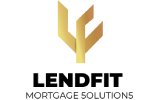New Mortgage Rules in Canada- January 1st, 2018

Stricter new mortgage rules about who can qualify for an insured mortgage took effect across the country. Canada`s OSFI (Office of the Superintendent of Financial Institutions) is “reinforcing a strong and prudent regulatory regime for residential mortgage underwriting.” Here is a link to the OSFI website.
Among the major new mortgage rules is a requirement to stress test uninsured borrowers. Previously, only insured borrowers had to undergo such a test. The stress test itself consists of ensuring the borrower would be able to pay the loan if interest rates become higher than they are today.

The stress test is designed to simulate a borrower’s financial situation by assuming they would have to pay back the loan at the posted average — not whatever deal they were able to negotiate. So under OSFI’s new rules, borrowers would be stress tested at either the five-year average posted rate, or two per cent higher than their actual mortgage rate — whichever one is higher. According to the Bank of Canada, the big banks currently have an average five-year posted mortgage rate of 4.89 per cent.
The idea’s critics, including many in the real estate industry, said imposing a stress test on all buyers would put a chill on the housing market at a time that it can ill afford it. But OSFI is pressing ahead anyway with changes it describes as “vigilant.”
Insured vs Uninsured – By law, borrowers with a down payment of under 20 per cent of a home must purchase  mortgage insurance. Borrowers pay an insurance premium, but the beneficiary is actually the lender, because the insurance protects the loan giver in the event the borrower defaults on the loan. Anyone who puts down more than 20 per cent of the value of a home doesn’t have to pay such insurance, and is known as an “uninsured” borrower. It is worth mentioning that the stress test does not apply to mortgage renewals, although your bank lender may choose to apply it.
mortgage insurance. Borrowers pay an insurance premium, but the beneficiary is actually the lender, because the insurance protects the loan giver in the event the borrower defaults on the loan. Anyone who puts down more than 20 per cent of the value of a home doesn’t have to pay such insurance, and is known as an “uninsured” borrower. It is worth mentioning that the stress test does not apply to mortgage renewals, although your bank lender may choose to apply it.
Mortgage Insurance premiums can easily be into the thousands of dollars, on top of the cost of a home, ranging from 0.6 to 4.5 per cent of the mortgage, depending on the size of the down payment and the price of the property. The vast majority of first-time borrowers have to purchase mortgage insurance, and they have been obligated to undergo a stress test of their finances since last year (2016).
In addition to the stress test, the new rules would require lenders to have more scrutiny around the loan-to-value ratio of the loans they give out, to ensure they are not giving out mortgages that are too large compared to the underlying value of the home.
There’s also new limitations on so-called co-lending or bundled mortgages that aim to ensure lenders don’t flout rules designed to limit how much they can lend.
There are smaller mortgage lenders who don’t come under the rules because they’re not backed by mortgage insurance. These rules apply only to banks, not to some Alternative lenders. They are corporations that have multiple investors that specialize in private mortgage lending. Alternative lenders typically specialize in a region, and are smaller-scale, in the $5-50 million range. The down side is that they set rates that reflect their risk.
Summary –
OSFI is setting a new minimum qualifying rate, or “stress test,” for uninsured mortgages.
- Guideline B-20 now requires the minimum qualifying rate for uninsured mortgages to be the greater of the five-year benchmark rate published by the Bank of Canada, OR the contractual mortgage rate +2%.
OSFI is requiring lenders to enhance their loan-to-value (LTV) measurement and limits so they will be dynamic and responsive to risk.
- Under the final Guideline, federally regulated financial institutions must establish and adhere to appropriate LTV ratio limits that are reflective of risk and are updated as housing markets and the economic environment evolve.
OSFI is placing restrictions on certain lending arrangements that are designed, or appear designed to circumvent LTV limits.
- A federally regulated financial institution is prohibited from arranging with another lender a mortgage, or a combination of a mortgage and other lending products, in any form that circumvents the institution’s maximum LTV ratio or other limits in its residential mortgage underwriting policy, or any requirements established by law.
If you are considering putting in an offer on property before the end of 2017, apply here to get the process started asap! Contact me for more information.


